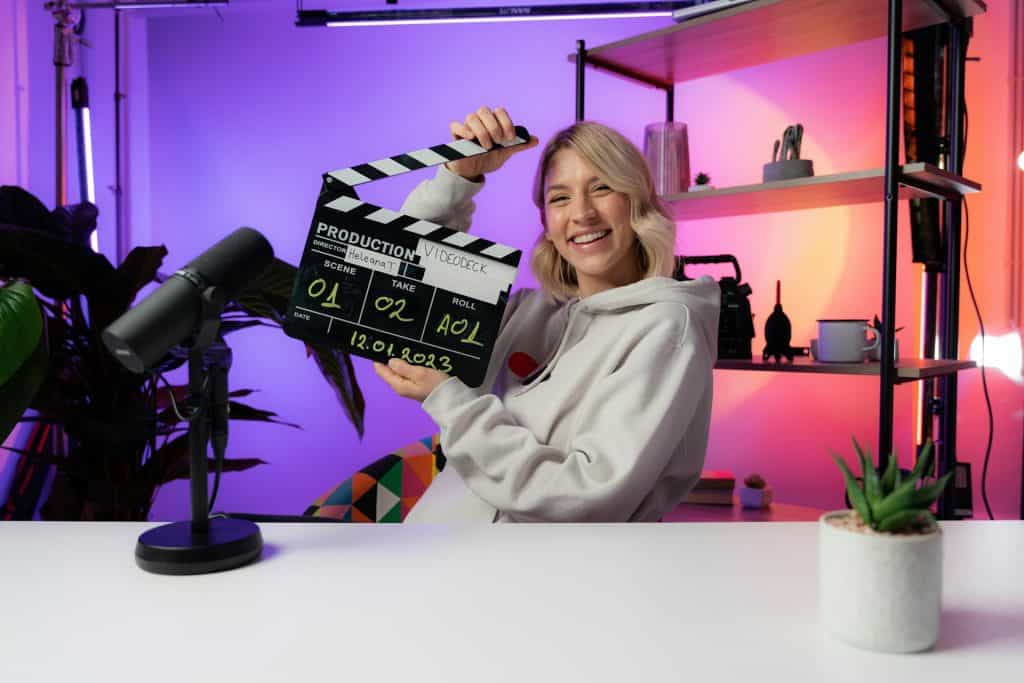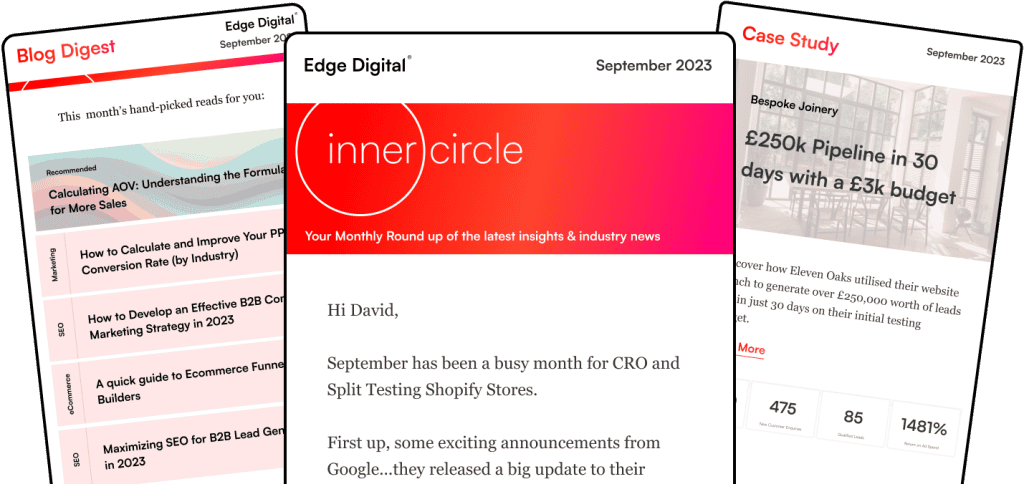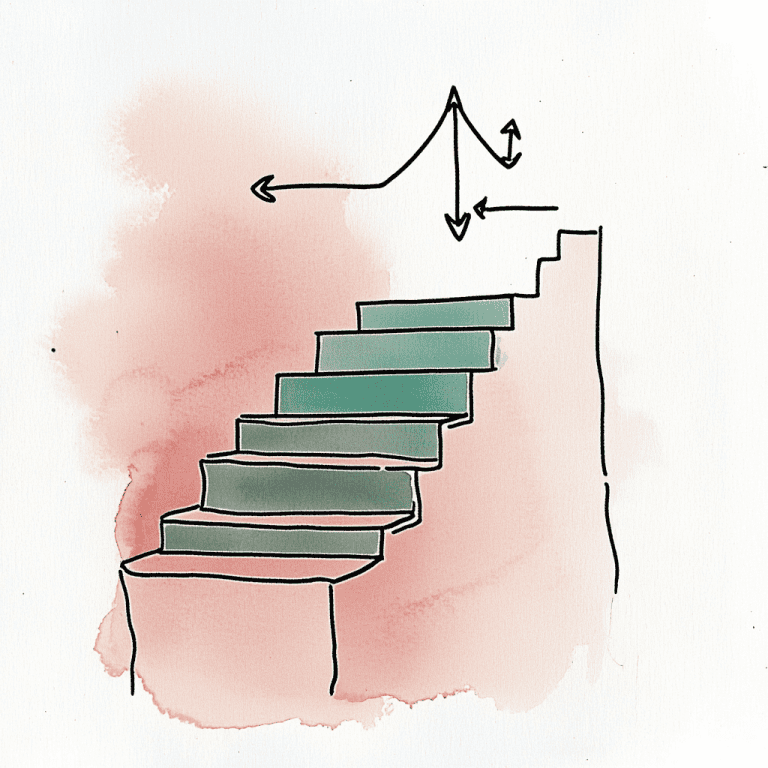Short form video ads have totally changed digital marketing. These quick ads grab attention and drive conversions in 60 seconds or less.
Platforms like TikTok, Instagram Reels, and YouTube Shorts are now where most people spend their time watching videos. If you want your business to reach today’s audiences, short form content is a must.

More than 66 percent of global internet users watch short-form video every week. Some brands are seeing up to 5x higher conversion rates from short-form video compared to old-school ads.
If you want to make great short form video ads, you’ll need to know the right platforms, production tricks, and targeting strategies. Whether you’re just starting or want to improve your current campaigns, getting good at these quick videos can really boost your brand’s reach.
Key Takeaways
- Short form video ads are under 60 seconds and get high engagement on social media.
- They’re cost-effective and usually give a better return on investment than longer ads.
- To succeed, focus on strong opening hooks, mobile-friendly formats, and content that fits each platform.
What Are Short Form Video Ads?
Short-form video ads are quick promo clips made to grab attention and get people to engage—usually on social media. These ads are usually 5-90 seconds and pop up right in people’s feeds, blending in with regular content.
Definition and Core Characteristics
Most marketers say short-form videos are under 60 seconds. The sweet spot is around 60 seconds so viewers stick around until the end.
Key characteristics include:
- Immediate engagement – You’ve got to hook viewers in the first 3 seconds.
- Mobile-first design – They’re made for vertical viewing on your phone.
- Native integration – They look and feel like regular posts.
- Action-oriented – There’s always a clear call-to-action.
Short-form video ads are great for boosting engagement and traffic. Plus, they’re cheaper to make than traditional ads.
Comparison with Long-Form Video
Short-form video ads and long-form videos serve different purposes. Long-form is all about telling a story or giving lots of info, while short-form is about making a quick impact.
Key differences:
| Short-Form Video Ads | Long-Form Video |
|---|---|
| 5-90 seconds duration | 2+ minutes duration |
| Quick engagement | Detailed storytelling |
| Mobile-optimised | Multi-platform |
| Higher completion rates | Lower completion rates |
| Lower production costs | Higher production costs |
Short-form is perfect for brand awareness and product highlights. Long-form works better for tutorials, testimonials, or deep dives.
Key Platforms for Short-Form Video Ads
The top platforms for short-form video ads are TikTok, Instagram Reels, and YouTube Shorts. Each one has its own vibe and audience.
TikTok is all about fun, full-screen, and sound-on videos. The algorithm helps good content get seen fast.
Instagram Reels fits right into your existing Instagram feed and lets you reach your followers easily.
YouTube Shorts uses Google’s ad system and shows up between regular Shorts videos.
You can also team up with creators for co-branded content. Other places to try are Snapchat Spotlight, Pinterest Idea Pins, and LinkedIn native video—just remember to tweak your content for each.
Benefits of Short Form Video Advertising
Short form video ads can seriously boost engagement, fit smoothly into social media, and help drive more conversions for your business.
Increased Engagement and Shareability
Short videos grab attention way better than traditional ads. Over 80% of online traffic is now video, and people are more likely to watch a short ad all the way through.
Because they’re quick, viewers don’t get bored. Most of us scroll past long content, but short videos keep us watching.
Engagement benefits:
- Higher completion rates
- Lower bounce rates on landing pages
- More time spent with your brand
Short videos are super easy to share. If people find them fun or useful, they’ll pass them on, which helps your message spread without extra ad spend.
Easy Integration with Social Media
Social media platforms love short-form content and push it to the top of feeds. TikTok, Instagram Reels, and YouTube Shorts all use algorithms that boost engaging short videos.
Integration perks:
- Native placement in feeds
- Works across multiple platforms
- Fits what the algorithms want
You can use the same 15-second ad on TikTok, Instagram Reels, and YouTube Shorts with little to no changes. That saves money and keeps your message consistent everywhere.
High Conversion Potential
Short-form ads get people to act fast by focusing on one clear message. There’s no room for distractions, so viewers know exactly what to do next.
Conversion perks:
- Higher click-through rates
- Less decision fatigue
- Mobile-friendly viewing
People are more likely to buy after watching a short, helpful video—especially if it clearly explains or solves a problem. Short videos are perfect for mobile users who make quick decisions.
Top Platforms for Short Form Video Ads
Short-form video ad platforms like TikTok, Instagram, and YouTube deliver 31% higher ROI than other formats. Each one needs its own strategy for best results.
TikTok Ad Formats and Best Practices
TikTok has several ad formats that blend right in with regular content. In-Feed Ads show up on the For You page, and TopView Ads take over the screen when someone opens the app.
TikTok Ad Formats:
- In-Feed Ads: 5-60 seconds with call-to-action buttons
- TopView Ads: Full-screen, up to 60 seconds
- Branded Effects: Fun filters and AR experiences
- Spark Ads: Boosted organic posts
On TikTok, authenticity wins over super polished videos. The algorithm loves content that feels native and fun.
Short, vertical videos (15-30 seconds) work best. User-generated content usually outperforms brand-made ads.
Jump on trending sounds and hashtags fast—ideally within a day or two. Using what’s popular helps your videos get seen.
Instagram Reels Advertising Strategies
Instagram Reels is all about visuals and has great targeting options. Reels show up in their own tab, Stories, and the main feed.
Instagram expects your content to look good—think brand colors and clean editing. You can even add shopping tags to make buying easier.
Reels Specs:
- Up to 90 seconds (but 15-30 is ideal)
- 9:16 vertical format
- Max 4GB file size
- At least 1080×1920 pixels
Instagram lets you target super specifically by age, interests, and more. Combining different targeting options makes your ads more relevant.
Reels can also show up in Stories, giving you extra reach without extra cost. The algorithm loves shares, saves, and comments, so make content that gets people interacting.
YouTube Shorts for Marketers
YouTube Shorts is great for discovery thanks to YouTube’s massive search engine. The platform is pushing short-form content hard.
YouTube Shorts Benefits:
- Search-friendly with titles and descriptions
- Perfect for series or recurring themes
- Integrated with main YouTube features
- Deep analytics for tracking
Use keywords in your titles and descriptions to help Shorts show up in search and the Shorts feed.
You can upload bigger files (up to 256GB), so you can go for higher quality or more detailed demos. YouTube’s audience loves videos that solve problems or answer questions.
Posting a series or sticking to a regular schedule can help grow your following, since the algorithm favors consistent creators.
Best Practices for Creating Effective Short-Form Video Ads

To make your short-form video ads stand out, focus on timing, a strong opening, and clear messaging. The goal is to break through the noise and get results.
Starting with a Strong Hook
You have about three seconds to grab someone’s attention. If you don’t, they’ll just scroll past.
Visual hooks—like bold images, big movements, or close-ups—work great. Quick product reveals or surprising demos also spark curiosity.
Statement hooks use direct lines or questions, like “Tired of…” or “This changes everything,” to make viewers stop and watch.
Pattern interrupts—unexpected angles, bright colors, or weird sounds—help your video stand out.
Try out different hooks and see what works best. Testing a few versions is the easiest way to figure out what gets the most engagement from your audience.
Optimal Video Length and Structure
68% of consumers prefer videos under one minute, so keeping it short is key. Aim for 15-30 seconds to get your message across without losing attention.
The three-act structure works well, even for short videos. Start with a hook and the problem in the first 2-3 seconds.
Use the next 10-20 seconds to show the solution or main message. Finish with a clear call-to-action in the last few seconds.
Timing matters by platform. Instagram Reels do best at 15-30 seconds, while TikTok can go up to 60 seconds, but shorter is usually better.
Cut out anything unnecessary—every second should matter. Filler content makes people drop off fast.
Pacing is huge for retention. Quick cuts and dynamic transitions keep viewers interested the whole way through.
Crafting Clear Messaging
Stick to one main idea per video to avoid confusion. Focus on a single benefit, feature, or call-to-action.
Be super clear about your value proposition. Viewers should instantly get what you offer and why it matters.
Rely on visuals to tell your story. Lots of people watch with the sound off, so use text overlays, demos, and clear product shots.
Place your call-to-action after you’ve shown the value, but before attention drops off. Make it specific and urgent, like “Shop now” or “Try free.”
Integrate your brand naturally. Use your logo, colors, and product shots in a way that feels authentic, not forced.
Test different messages to see what clicks with your audience.
Audience Targeting and Content Relevance

Short-form video advertising works best when you know exactly who you’re talking to. Personalising content and staying on top of trends helps you connect with your target audience.
Understanding Your Target Audience
Start with solid audience research. Look at demographics, platform habits, and what kind of content your viewers prefer.
Demographic Analysis
- Age and generation
- Location and culture
- Income and buying power
- Education and job roles
Behavioural Patterns
Different groups use platforms in different ways. Gen Z likes authentic, casual content on TikTok, while millennials enjoy nostalgia and life-stage messaging on Instagram Reels.
Check out when your audience is most active and how they watch videos. Mobile viewing is huge—78% of video watching happens on phones, usually in short bursts.
Pain Points and Interests
Find out what your audience cares about and what problems they need solved. Tailor your content to address these directly.
Build detailed buyer personas that reflect actual viewing habits and platform preferences.
Personalisation and Segmentation
Don’t go broad—make videos for specific groups. AI-driven tools can help you segment and personalise content more than ever.
Segmentation Strategies
| Segment Type | Targeting Criteria | Content Approach |
|---|---|---|
| Demographics | Age, gender, location | Age-appropriate messaging, local references |
| Behavioural | Purchase history, engagement | Product recommendations, retargeting |
| Psychographic | Values, interests, lifestyle | Emotional appeals, aspirational content |
Dynamic Content Creation
Make different versions of your video for different groups, but keep your brand message the same. Product-focused content is great for those ready to buy, while educational clips work for people just learning about you.
Platform-Specific Personalisation
Every platform has its own vibe. TikTok users want fun, entertaining videos. Instagram fans love good visuals. YouTube Shorts viewers often look for quick info.
Use language, scenarios, and solutions that match your audience for better engagement and conversions.
Leveraging Trends for Higher Reach
Jumping on trends can boost your reach and keep your content relevant. Algorithms love trending content, so you can get more eyes without extra ad spend.
Trend Identification
Watch for trending hashtags, audio, and formats. TikTok’s Discover, Instagram’s Trending, and YouTube’s Trending tabs show what’s hot right now.
Make sure the trend fits your brand and audience before joining in. Not every trend is a good fit.
Authentic Trend Integration
Only use trends that genuinely fit your brand or product. Forced trends feel awkward and turn people off.
Timing and Execution
Trends move fast—TikTok trends might last just a few days, while Instagram and YouTube trends stick around a bit longer.
Combine paid ads with trend-based organic content and influencer partnerships for even more impact.
Be ready to act quickly so you don’t miss the trend window.
Short Form Video Ad Production and Distribution
Making great vertical video means using the right filming techniques and aspect ratios. Repurposing long-form content helps you get more from your video budget.
Consistent posting schedules across platforms help you reach more people and keep engagement up.
Vertical Video Creation Techniques
Shoot all short-form videos in a 9:16 aspect ratio since that’s how people watch on their phones. This fills the screen and keeps viewers engaged.
Keep your subject in the top two-thirds of the frame. Leave room at the bottom for things like captions and buttons.
Place text overlays in the middle third so nothing important gets cut off.
Use ring lights or softboxes to keep faces well-lit and avoid harsh shadows.
Move the camera vertically (up and down), not side to side, to match how people scroll on their phones.
Repurposing Long-Form Video Content
Pull out the best 15-60 second clips from your longer videos. These should stand alone and make sense without extra context.
Find strong hooks—start with a great line or visual to grab attention in the first 3 seconds.
Break down big topics into bite-sized tips or points, creating several short videos from one long one.
Add captions, graphics, and transitions to make the clips pop on mobile.
Adjust the length and style for each platform. Instagram Reels like 15-30 seconds, while YouTube Shorts can go up to 60.
Maintaining Posting Consistency
Set up a posting schedule that matches when your audience is online. Most platforms reward accounts that post short videos daily or every other day.
Batch content creation by filming several videos at once. You can knock out 5-10 in a single session.
Use scheduling tools to post at the best times for each platform.
Track performance to see which times and posting frequencies work best, and tweak your schedule accordingly.
Mix up your content—switch between educational, behind-the-scenes, and promotional videos to keep things fresh.
Frequently Asked Questions
Video length, platform choice, and tracking the right numbers all play a big role in how well your campaign does. Tailoring your content for each platform boosts engagement and conversions.
What are the optimal lengths for short-form video advertisements to ensure viewer engagement?
Best length depends on the platform and your audience. TikTok and Instagram Reels work well with videos between 15-30 seconds.
YouTube Shorts are good at 15-60 seconds, but make sure you grab attention in the first 3 seconds. Try to deliver your main message within the first 8 seconds for the best retention.
Shorter videos (under 30 seconds) usually get better completion and engagement rates across the board.
How can I effectively measure the success of short-form video adverts?
Keep an eye on view completion, engagement, and click-through rates. Also track cost per acquisition and return on ad spend for a full picture.
Each platform has its own benchmarks—TikTok’s engagement rate averages about 6%, while Instagram Reels is closer to 1.2%.
Set up conversion tracking to see actual sales or leads. Don’t forget about reach and shares to measure brand awareness.
What strategies should be considered to create compelling content for short-format adverts?
Hook people in the first 3 seconds with something eye-catching or surprising. Make each video feel like it belongs on the platform, not like a regular ad.
Use quick stories—problem and solution, or before-and-after shots—so viewers stay interested the whole time.
User-generated content and real testimonials work great. Use trending sounds, hashtags, and effects that fit your brand.
Which platforms are currently most effective for distributing short-form video commercials?
TikTok is king for reach and engagement, especially with people aged 16-34. Its algorithm helps even new brands get noticed.
Instagram Reels is perfect if you already have an Instagram following, and it’s popular with both millennials and Gen Z.
YouTube Shorts taps into Google’s search and ad system, so it’s great for reaching a wide range of people and fits well with existing YouTube strategies.
How do you tailor short-form video adverts for different social media platforms?
TikTok calls for vertical videos with trending audio and a native, authentic feel. Join in on challenges and trends.
Instagram Reels need high-quality visuals and should match Instagram’s look. Use its editing tools and filters.
YouTube Shorts do best with strong thumbnails and catchy titles. Optimise for search, but keep the pace fast and the content punchy.
What are the best practices for including calls to action in short-form video advertisements?
Visual calls to action work better than just saying them out loud in short-form videos. Using text overlays, arrows, or animated elements helps guide viewers to take action.
Timing matters a lot for where you place your CTA. It’s usually best to put the main call to action around 15-20 seconds in, when people are still paying attention and your message is clear.
Keep your CTAs simple and direct. Instead of saying “learn more,” try using action phrases like “shop now,” “get quote,” or “book today” so viewers know exactly what to do next.



